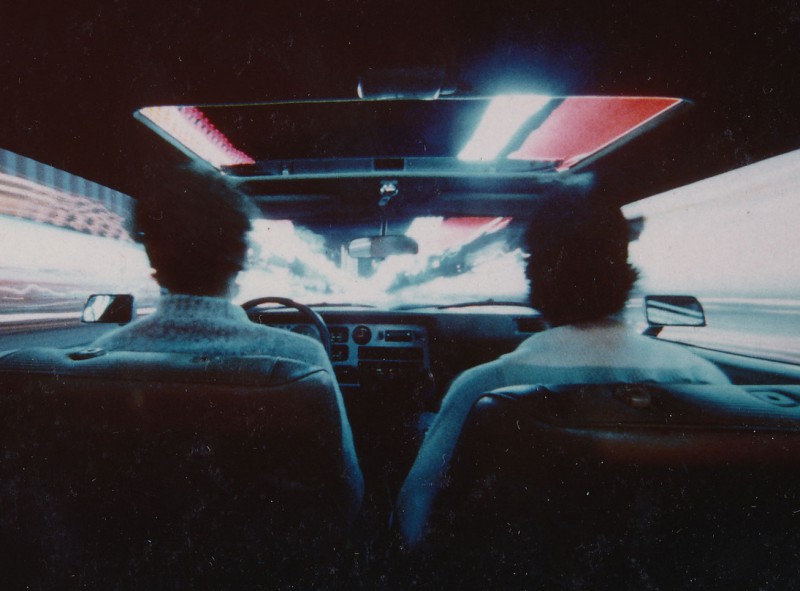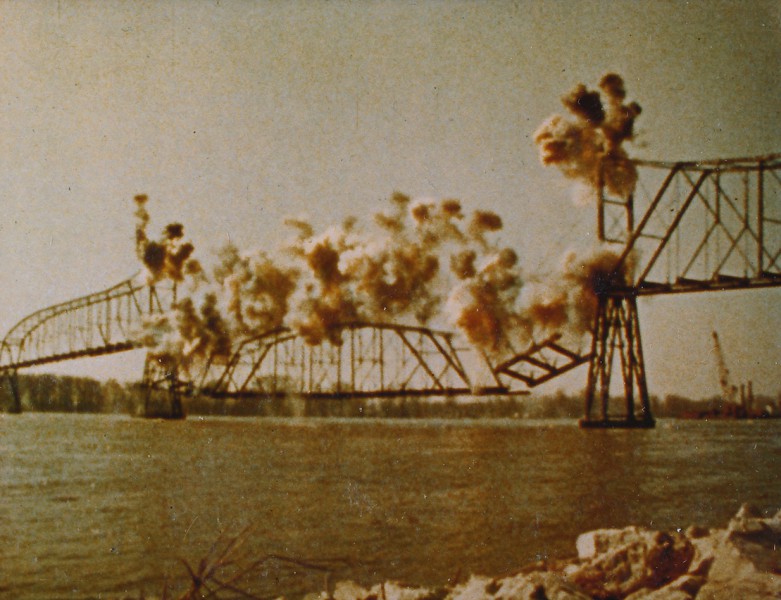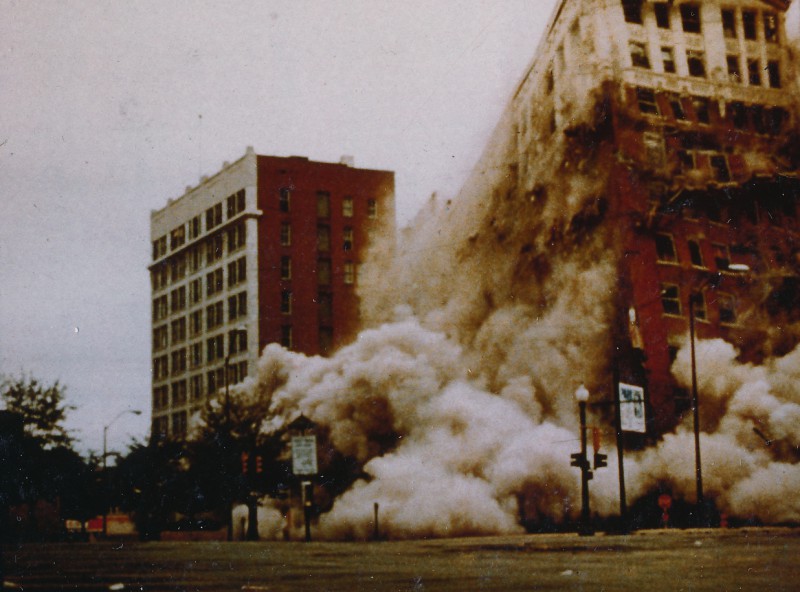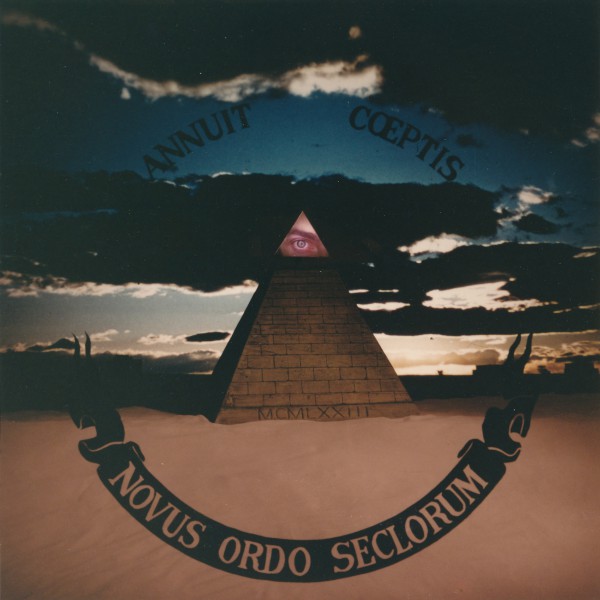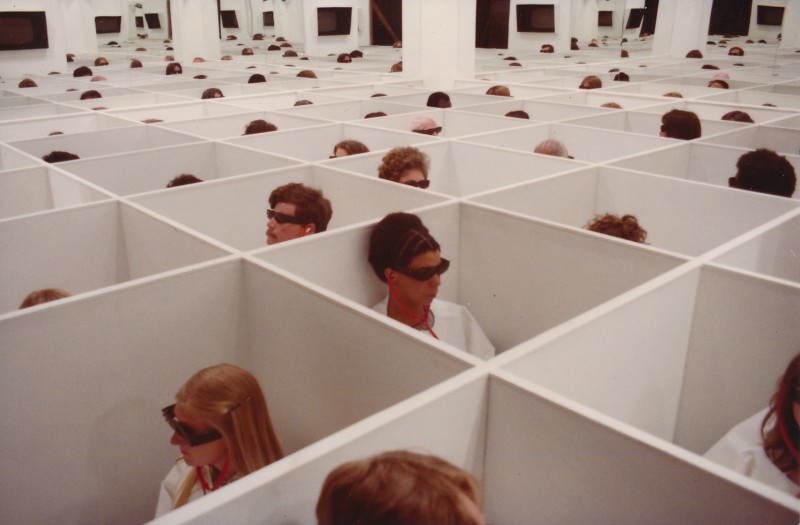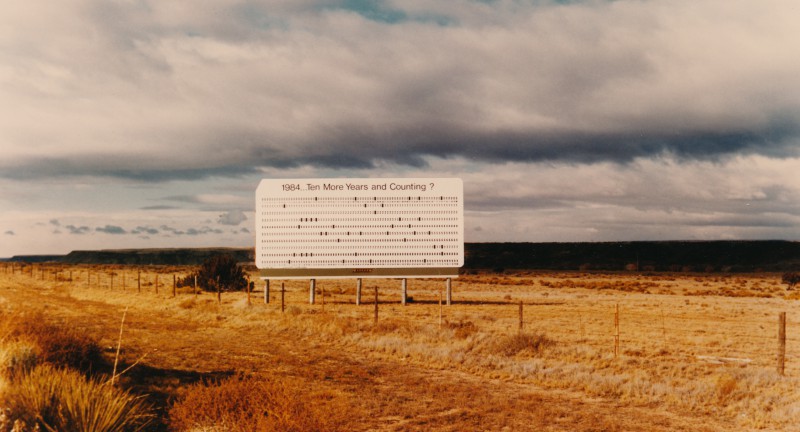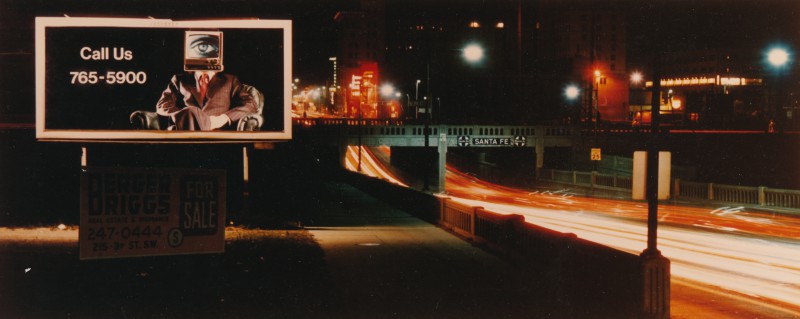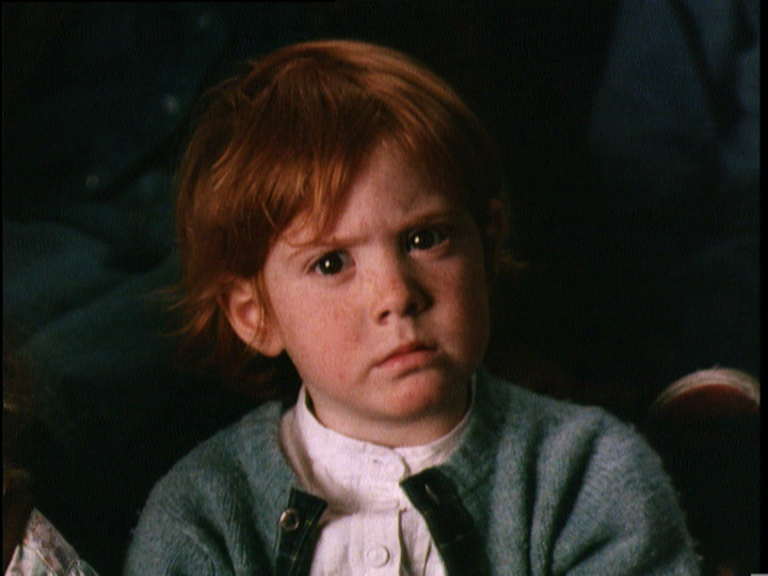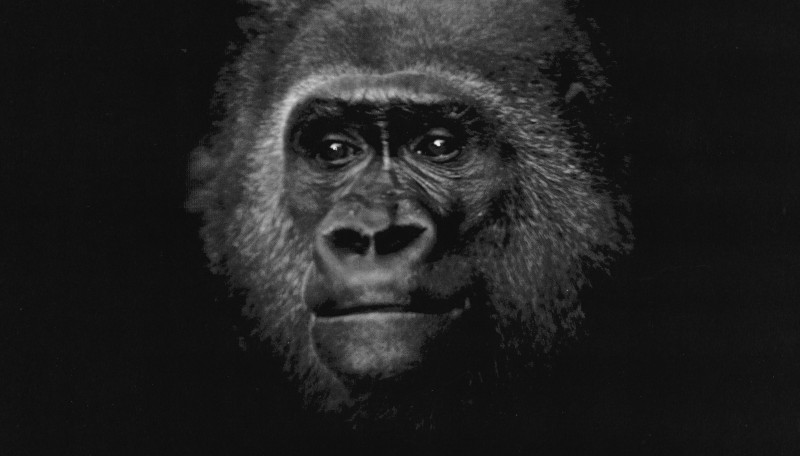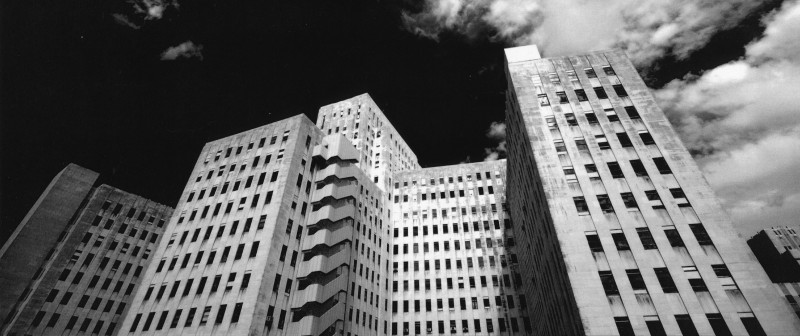
An artist, thinker and social/environmental activist, Godfrey Reggio (b. 1940) has been making experimental documentary films for wide release. His fourteen years as a monk in quiet contemplation and his subsequent devotion to active community service and engagement are evident in every frame of his film work. His seminal Qatsi trilogy (1982 - 2002) and Koyaanisqatsi in particular—famous for its epic time-lapse cinematography melded to a mesmerizing Philip Glass soundtrack—presents a stunning macro-view of civilization’s ongoing passage upon the earth. With this trilogy and his other works—including Evidence (1995), Anima Mundi (1991) and Visitors (2013)—Reggio’s grand vision seems to encompass every corner of the world as if overseen by a curious, alien eye.
Reggio does not so much tell us what we are seeing as make us see what the world is telling us. Reggio's camera gazes unrelentingly at us, our society of being, the animal kingdom, and the spirit of this planet—to manifest the entirety in the details.
Qatsi trilogy
Released in 1983, Godfrey Reggio’s Koyaanisqatsi numbers among the more remarkable debut films in American cinema history. The nonnarrative feature with a mysterious title provided an intervention into normal moviegoing, but despite its refusal of character and plot, it was and is engaging and often awe-inspiring in its depiction of American landscape and cityscape. Indeed, Reggio’s commitment to transforming the familiar into the visually fascinating recalls the Lumière brothers’ first films.
Koyaanisqatsi quickly became an art-house hit as well as a popular presentation at colleges and universities, and it remains well known among a cine-wise, environmentally concerned younger generation. Beautifully photographed by Ron Fricke, Koyaanisqatsi is accompanied by a Philip Glass soundtrack that has had its own considerable life. The success of the film opened the way for two more: Powaqqatsi (1988) and Naqoyqatsi (2002). Each of the Qatsi films is a meditation on a different dimension of modern life, and together they offer a celebration of the magnificence of both natural and human creation, as well as a warning about how much is endangered if we fail to find a more effective balance between nature and technology. – excerpt from Scott MacDonald's Avant-Doc: Intersections of Documentary and Avant-Garde Cinema (2014).
Institute for Regional Education
In 1972, Godfrey Reggio co-founded the Institute for Regional Education in Santa Fe, a non-profit foundation focused on media development, the arts, community organization and research. In 1974 and 1975, with funding from the American Civil Liberties Union, Reggio co-organized a multi-media public interest campaign on the invasion of privacy and the use of technology to control behavior. The campaign included billboards, print ads, a thirty-eight-page newspaper insert and a series of jarring public service announcements which were regularly broadcast on television.
[The public service campaign] was right after the Watergate hearings started. My colleagues [and I] felt that was just the tip of the iceberg, that in fact all Americans had dossiers kept on them by credit agencies and government agencies; and that the technologies developed for the moon [landing] and Vietnam were translated into technology used to control behavior or to put surveillance on the population. The motto of that campaign, which was done in 1974, was “Ten Years and Counting”—we were anticipating of course Orwell’s 1984. What we experience now was already solidly in place during that time, it’s just that people didn’t have much attention for it. Now, it’s inescapable. It’s lamentable that people accept it as the price we pay for the pursuit of our technological happiness.
Dedicated to promoting and providing information and resources to the general public which they would otherwise not receive, the IRE has focused on public media and outreach including community-based video, public art and sculpture displays and path-breaking films.
ANIMA MUNDI
Commissioned by Bulgari, the Italian jewelry company, and the World Wildlife Fund “to create a biological diversity manifesto,” Reggio crafted an ode to the beauty, majesty, diversity and interconnectedness of the natural world. Accompanied by Glass’ music, the film intertwines breathtaking footage—both existing and original—of animals on land, underwater and in the air. The title refers to Plato’s concept of the world as an overarching, living being with a soul and intelligence.
EVIDENCE
In addition to IRE, Reggio has co-founded other service-oriented organizations: Young Citizens for Action, a project which helped youth street gangs; La Clinica de la Gente, a community health clinic in Santa Fe; and La Gente which he describes as “a community-organizing project in Northern New Mexico’s barrios.”
In 1993, Luciano Benetton and Oliviero Toscani invited Reggio to help develop “an enterprise of exploration and production in the arts, technology and mass media.” Based in Treviso, Italy, Fabrica – Futuro Presente opened in the mid-90s and continues its creative, interdisciplinary work to this day. Reggio was Fabrica’s director for its first thirteen years during which he made the short film Evidence (1995). Once again aided by the undulating strains of Philip Glass, his audience is hypnotized staring into the eyes of another hypnotized audience: children in thrall to an unseen televisual image.
VISITORS
After Naqoyqatsi, Reggio didn’t finish a new feature until Visitors. These substantial gaps in time are necessitated in part by the filmmaker’s commitment to making technically advanced films for large-scale theatrical exhibition—money for these sorts of projects is not easy to come by—and presumably by the meditative sensibility that seems to infuse their films. Visitors, like Reggio’s earlier features, was developed in collaboration with composer Philip Glass, but while it sometimes evokes the Qatsi Trilogy, it is distinct both formally (Visitors was shot in elegant black-and-white on 3K and 5K high-definition video and released in 4K) and in terms of its subject matter: Reggio’s focus is on portraits of individuals, nearly all of them in close-up, interspersed with panoramic imagery filmed in areas of Louisiana that had been, five years earlier, devastated by Katrina.
Reggio’s black-and-white close-ups in Visitors evoke Warhol’s Screen Tests of 1964‒66, in their composition, as well as in their meditative pace—though the kinds of gaze that interest Reggio are quite different from the gazes of the Factory visitors. Visitors seems part of a contemporary revival of interest in the cinematic portrait, shared by filmmakers such as Susana de Sousa Dias (48 [2009]) and by Stephanie Spray and Pacho Velez (Manakamana [2013]). The experience of looking at Reggio’s stunning imagery within the context created by Glass’s elegant composition is akin to the powerful experiences enjoyed by the original audiences for the Cinématographe, for nineteenth century moving and still panoramas, and for Louis Daguerre’s Diorama shows. – Adapted from Avant-Doc: Intersections of Documentary and Avant-Garde Cinema (2014) by Scott MacDonald
ABOUT THE COLLECTION
A finding aid for the Godfrey Reggio/IRE Collection is available in Hollis for Archival Discovery.
The Reggio/IRE Koyannisqatsi Collection consists of production elements, including sound and picture outtakes, and final release elements for all of Reggio’s projects in their original release formats; and fifty-five cubic feet of paper and photograph based materials documenting the work of Reggio and the Institute for Regional Education.
Collected and created by the filmmaker over the course of his career, these materials will provide scholars with new insight into Reggio’s oeuvre.
ADDITIONAL RESOURCES
Godfrey Reggio's website
"Interview: Godfrey Reggio," Scott MacDonald, Film Comment, February 2014
"Godfrey Reggio by Alex Zafiris," BOMB, February 2014
"Godfrey Reggio: A Call for Another Way of Living," Richard Whittaker, works & conversations, February 2006
